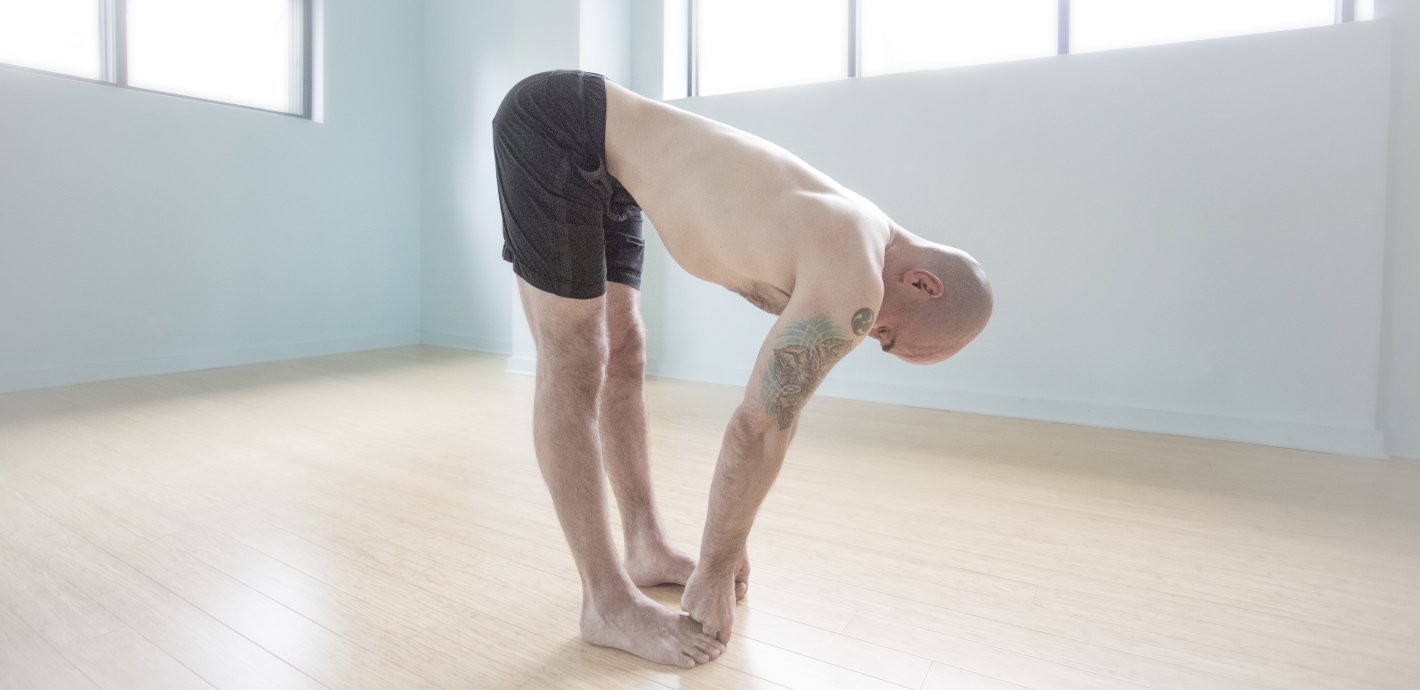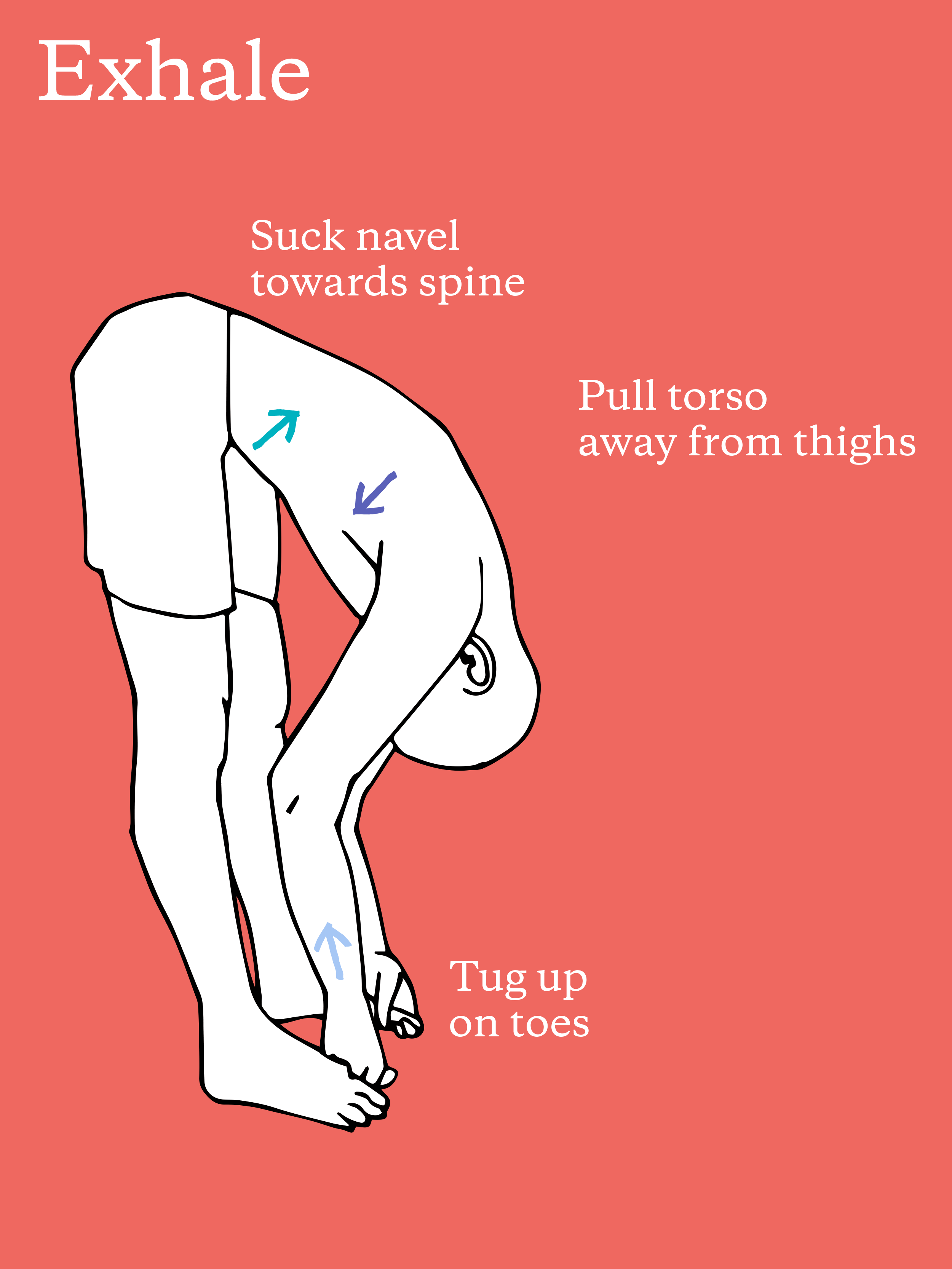The Sanskrit word bandha is generally considered to mean “lock” but more literally “to bind” or “to hold captive.” In hatha yoga, bandhas are physical contractions that give structural support to the body including the organs in the pelvis, abdomen, and spine. These locks become especially important in keeping the body healthy during a vigorous and physically demanding practice because they engage the tissue surrounding the core. When engaged in conjunction with pranayama (breath work) and kumbhaka (breath retention), bandhas stop the movement of prana (the vital life force, or energy). According to the Hatha Yoga Pradipika, a classic Sanskrit manual on hatha yoga, when this force stops moving, the mind stops moving as well.
Uddiyana means “to rise up” or “fly.” In the practice of uddiyana bandha, also known as the abdominal lock, the abdominal wall is firmed and lifted. The tension created when working with the uddiyana bandha is a form of “tensegrity,” the relationship between tension and compression. When the core is engaged (tension) there is a natural upward flow (compression) of energy that gives the necessary support to the abdominal organs and spine. On a more subtle and esoteric level, uddiyana bandha fans the agni, or element of fire that is most highly concentrated at the navel. Strengthening this fire aids in purifying the body’s subtle channels, or nadis. This purification process is intensified if uddiyana bandha is practiced during a bahir/bahya kumbhaka, or external breath retention. This is sometimes called uddiyana kriya. One of the main goals of hatha yoga is to purify these nadis to allow prana to flow more freely. Anatomically speaking, uddiyana kriya has a powerful toning effect on the visceral organs, muscles, nerves, and glands in the solar plexus area. It also gives a horizontal stretch to the diaphragm, which can assist in deep breathing and free up this muscle to help break chronic chest-breathing patterns.
Related: The Intriguing Tantric Practices You Should Really Know About
Practicing uddiyana bandha/kriya creates a strong vacuuming effect in the abdomen and puts pressure on the organs. For this reason, it is not recommended during pregnancy or menstruation, nor for people suffering from ulcers and hernias.
A posture in which it’s helpful to explore uddiyana bandha/kriya using the principles of tensegrity is this forward bend (Padangusthasana), in which the hands and feet are connected. First, make sure you prepare with several rounds of Sun Salutations, then allow your heartbeat and breath to slow down to their natural pace. Next, with your feet parallel and about hip-width, lean forward and hold the big toes with the first two fingers of either hand. As you exhale, pull your torso down toward your thighs. At the very end of exhale, pause the breath and slowly pull away from the thighs as you suck the navel back towards the spine. The tension created when the arms stop this movement result in an upward compression of the abdominal organs and diaphragm. Once the arms are straight, inhale. Repeat three to four times.
Photo by Mitchell Manz; Graphic by Sarah Weiss









Comments (0)